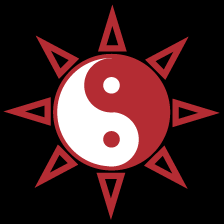By Liz Kelchak, M.S.O.M., L.Ac.
History:
Cupping therapy was introduced over 3000 years ago. According to The A
cademy of Classical Oriental Sciences- acos.com; there is a saying in China: “Acupuncture and cupping, more than half of the ills cured.” Zhao Xue Ming, a doctor practicing more than 200 years ago, compiled a book entitled Ben Cong Gang Mu She Yi, in which he describes in detail the history and origin of different kinds of cupping and cup shapes, functions and applications.
In mainland China the developing research on cupping therapy has been rapid. In the 1950’s the clinical efficacy of cupping was confirmed by the co-research from China and the former Soviet Union which established cupping as an official therapeutic practice in hospitals all over China.
Process:
Cupping is a technique that consists of placing glass jars over an area of skin. By putting a flame into the cup, the oxygen is burned out of the cup creating a vacuum, drawing up the skin and opening the pores. The suction pulls up and stagnates blood in the tissues to the surface so new blood can circulate and heal the area. The cups are typically placed on acupuncture points and areas of pain. It’s main function is to move fluids and increase blood flow but many other health benefits are noted below.
Benefits:
- Stimulates blood flow
- Balances the flow of Qi (oxygen/energy)
- Breaks up stagnation causing pain and inflammation
- Draws out toxins (like nicotine)
- Loosens muscles and relaxes connective tissues
- Sedate the nervous system
- Improving gastrointestinal disorders like bloating and IBS
- Colds & coughs
- Fluid accumulation & Swellings
- Asthma
- Varicose Veins
Types of Cupping:
Stand cups: Cups are put on specific points and can stay on for a few minutes to half and hour or more. Used for specific localized pain or swelling or for coughs and colds with phlegm in the lungs.
Slide cups: Cups are applied over lubricated area and moved over muscle tissues. Used for more widespread tension/pain issues, bad blood stagnation like in whiplash or excess conditions like anxiety or insomnia.
Bleed cups: A point is lanceted for a drop of blood and then a standing cup is placed over the point to draw blood and toxins out. Used for blood stagnation causing extremely sharp or stabbing pains, intense burning pain, sprains, inflammation of tissues, and to reduce fever. Also used to remove toxins after a venomous bite (spider/snake)
Temporary discoloration can occur where the cups are applied, which generally dissipates within a few days. Light red colors indicate heat and inflammation, purple indicates blood is not flowing well through the muscles, yellow indicates acidic conditions. Once there is no discoloration, free flow of qi and blood has occurred and cupping therapy can be diminished or stopped.
Contraindications:
- Open skin/wounds
- Abdominal and lower back during pregnancy
- Orifices
Cupping has been around for a very long time, and has made it into many cultures, not just Asia. It has become a common therapy among the general population, passed on to the following generations by elder family members. Cupping can be done with or without acupuncture therapy but must be delivered by a trained individual as the suction mechanism requires a flame and could cause a burn if not correctly administered. However, when used correctly, cupping has many health benefits and is commonly used in our clinic for musculo-skeletal complaints, tension, pain, cough and colds daily.
